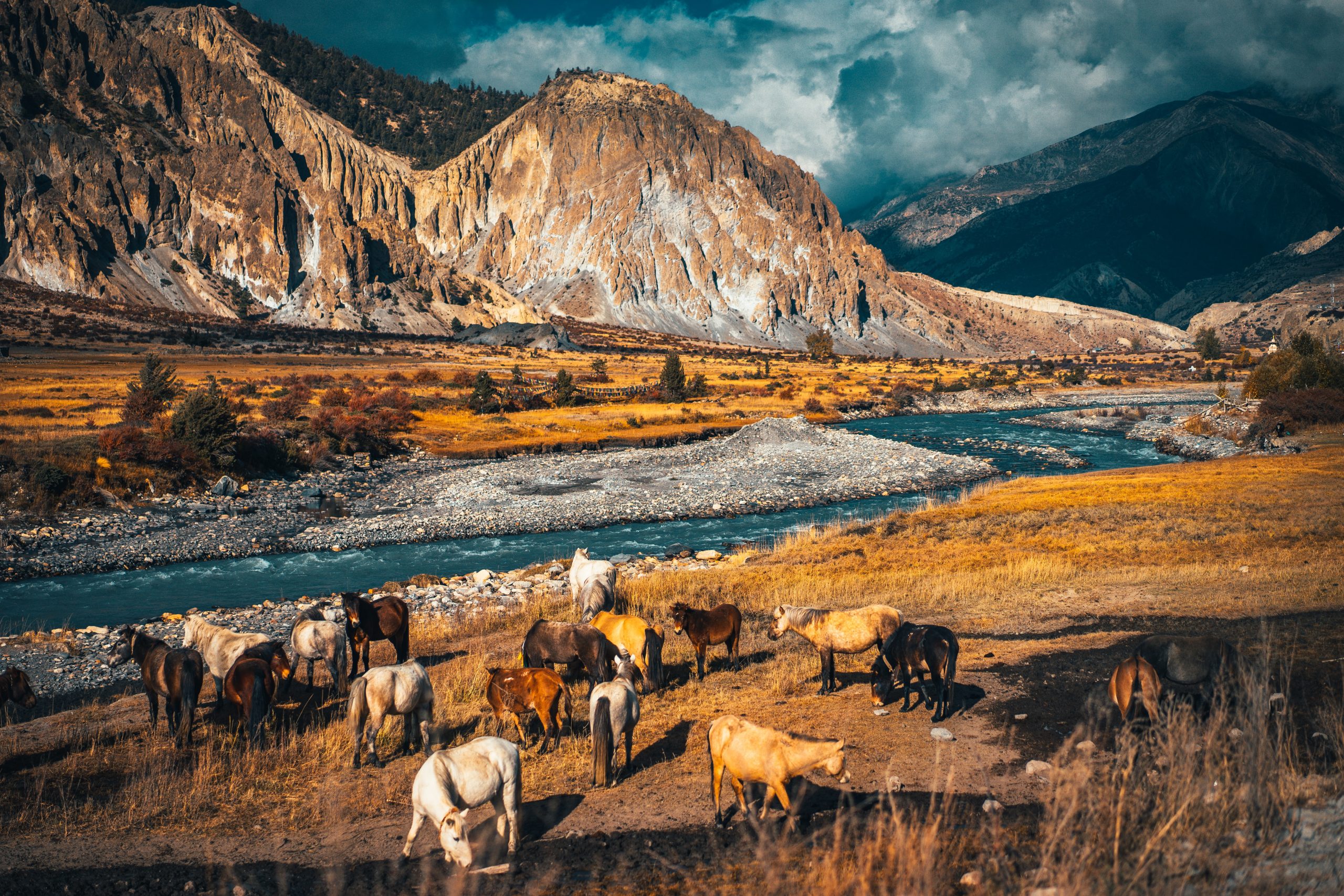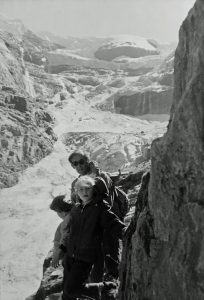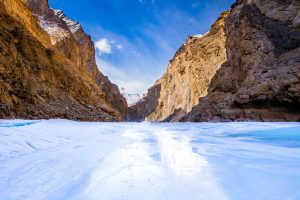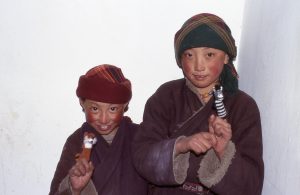- Free shipping in NL above €50,-
- Always free returns
- NL orders before 16:00, shipped today

Geologist Myra de Rooy is a Dutch mountaineer as well as a writer and photographer. Fascinated by the mountain world and its inhabitants, she has made many solo trips in remote areas in Tibet, Ladakh, Nepal and Norway.

“Only those who are well prepared can improvise”
The best gift a parent can give a child is love for nature. I was born to travel-loving parents who went off the beaten path. I learned that a sense of freedom can come from simple things, like getting purple fingers from picking blueberries or enjoying the view from a mountain top. Wealth is camping in the wild, drinking river water without having to purify it or burning a campfire with one match and birch bark.
When someone asks me why I started climbing, I catch myself smiling. That question feels like “why am I breathing?” And “why did I run?”. The answer I usually give is the easiest. “As a toddler I came into contact with the mountains. I was even there before I was born. My mother Isolde was pregnant with me when she and my father Jan climbed the Wildspitze, the second highest mountain in Austria. Mountain love infused with the spoon”.

My dreams for the future originated in my growing collection of stones, minerals and fossils. In elementary school I decided to become a geologist later on. What better way to learn how mountains are shaped as well as nurturing my childhood fascination with Earth’s origins, than by studying geology? For me there are two experiences that have contributed significantly to the way I now live life and approach people. I did geological fieldwork in Lapland and joined a student alpine club.
Passion for mountains does not only arise from breathtaking beauty or a desire for space and views. It can also lead to insights. Climbing takes strength, but provides energy. Climbing mountains – and not conquering them, because I am only a temporary guest on a mountain top – is only possible together. That is precisely the point: Climbers literally hold each other’s lives in their hands and that requires trust. And I could only experience that by opening the door to others during climbing weekends in the Ardennes or during rougher Alpine tours. There I learned, step by step, to talk about emotions. I also enjoyed the confrontation with gravity and the direct contact of my fingers with limestone or rough granite. The world was at my feet and I had heaven for a roof over my head. Mountain climbing is not a game with death or being a daredevil, it’s above all a lively dance with freedom. And yet, I have experienced it several times, defying gravity is not without danger. Friends of mine have died in the mountains.

For a number of summers I did not attack snowfields and ice walls with an ice ax and pickel, but chopped stones with my geologist’s hammer. I did my graduation field work in Norway, sixty-five square kilometers of uninhabited wilderness under the name of Krutfjell. Did I want to prove that for two summers I could find my way alone in an inhospitable mountain area without paths? Looking back, I realize that that fieldwork period created room for development. In the landscape sculpted by geological forces, I could wander for days on my own and feel comfortable and even at home. I learned that silence is not scary and that spending time without others is not the same as being lonely. More important, however, was that at the Krutfjell the realization grew that in order to really live human contact is essential and nourishing, no human being can do without others. The fieldwork was a learning experience for everyday life and for trips to remote mountain areas. Unlocking that gateway opened the way to bond with local mountain people.
After completing my geology studies, I was asked to be the second driver to drive a van with tourists from the Netherlands to Nepal. There I first came face to face with Himalayan giants and it was love at first sight. It was the beginning of a persistent “Himalayan and Tibet addiction”. For example, I took part in the first Dutch women’s expedition and we climbed the 7.290 meter high eastern peak of the Chamlang in Nepal. Many times I returned to that region. As a climber, tour guide, with friends and with Hans my beloved. After his death mainly during solo trips.

Scandinavia also continued to pull. I traveled solo through the mountains from the southernmost tip of Norway, Lindesnes lighthouse, to the northernmost point, the North Cape – a journey of 3,000 kilometers. In winter with sledges and skis, camping at minus 34 degrees, stuck in remote mountain huts during storms for days, not seeing a person for weeks. In the summer I hiked with my backpack through breathtaking mountain regions, past glaciers, roaring rivers and quiet lakes, I climbed sacred mountains, but also soaked through arctic tundra swamps with reindeer and dancing mosquitoes for company. Sometimes it was tough and dangerous, but it was mainly enjoying the wide and rugged mountain landscape.

During “Norway in length”, but also on the way through all those other mountain areas, my luggage was essential. Not having the right things at hand can be life-threatening. Material choice is always personal. It depends on the duration of a trip, the conditions I expect to encounter, summer or winter period. Am I going out solo or with others? That saves weight because, for example, I can share a burner. Not unimportant is how much money can be spent and how comfortable do I want to be it on a trip? Suffering is fun, but can sometimes get in the way of enjoying it.
Some tips from my “climbing and hiking career”.
Don’t stop at just dreaming. Be inspired by others. Look around the internet, read books and articles. Then take the plunge and go out, because there is no better adventure than your own adventure. And only those who are well prepared can improvise.





Myra de Rooy has written five books, Vrouwen in Boeddha’s Bergen (2004), Het Windpaardhuis (2007), Dochters van de bergen (2015), Chamlang (2017) en In de lengte (2020). Social, political and human stories play an important role in her books. Always with the mountains as a backdrop and she herself who travels through them. Windhorse House, Life stories in the shadow of Tibet (2021) is published in English.
Powered by WhatsApp Chat
WhatsApp Chat is free, download and try it now here!
